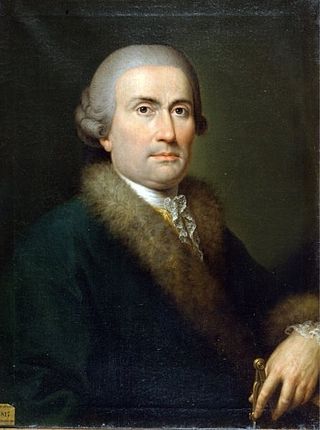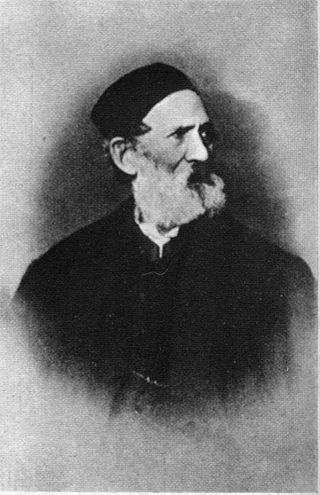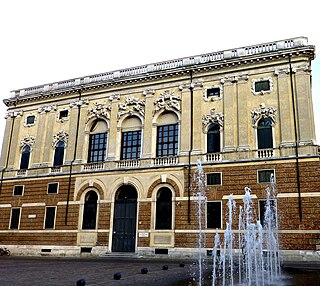
Gerolamo Frigimelica Roberti (10 January 1653 - 15 November 1732) was an Italian architect, librettist, and poet.

Gerolamo Frigimelica Roberti (10 January 1653 - 15 November 1732) was an Italian architect, librettist, and poet.
Born in Padua to a father who had married into the noble Robert family, thus gaining a title of Count for his son. Gerolamo acquired a broad humanist education and from 1691 to 1720 was curator of the public library of Padua and admitted as member to its Accademia galileiana di scienze, lettere ed arti or Accademia dei Ricovrati.
In 1721, he moved to Modena. He was now active mainly as an architect, designing palaces and churches in Padua, Vicenza, and Modena. He worked on the Cappella del Santissimo at the Basilica di Sant'Antonio di Padova and made designs for the churches of Santa Maria del Torresino and Santa Lucia at Padua. He also made designs for the church of San Gaetano in Vicenza, and the palaces Mussato and Buzzacarini in Padua; and the enlargement for the Palazzo Pisani a San Stefano in Venice.
He is known for having produced an initial plan in 1716 for Villa Pisani at Stra, however, the densely detailed design, with a central pavilion cramped with columns, was rejected by the patron Alvise Pisani. The design for the central pavilion seemed more apt for a Venetian Palazzo. Instead a more sober, Neoclassical design was adopted after his death by Francesco Maria Preti. [1]
Also important to Frigimelica was his work as a librettist for opera. His first 11 texts were written for the Teatro San Giovanni Grisostomo of Venice, and set to music between 1694 and 1708 by Carlo Francesco Pollarolo, Alessandro Scarlatti, Antonio Caldara, and Luigi Mancia. Later works were produced mainly for the Teatro Obizzi of Padua.
He worked in a style of opera seria similar to Apostolo Zeno, Francesco Silvani, and Adriano Morselli. His libretti consisted of five acts and were about historic and mythologic subjects, and were called tragedies or tragic-comedies. he also wrote the text for seven musical oratorios, performed between 1697 and 1702. He died in Modena. [2]
His relationship to Antonio Frigimelica Roberti, an 18th-century academic, or Francesco Frigimelica il Vecchio, a painter, is unclear.

Vicenza is a city in northeastern Italy. It is in the Veneto region, at the northern base of the Monte Berico, where it straddles the Bacchiglione River. Vicenza is approximately 60 kilometres (37 mi) west of Venice and 200 kilometres (120 mi) east of Milan.

Vincenzo Scamozzi was an Italian architect and a writer on architecture, active mainly in Vicenza and Republic of Venice area in the second half of the 16th century. He was perhaps the most important figure there between Andrea Palladio, whose unfinished projects he inherited at Palladio's death in 1580, and Baldassarre Longhena, Scamozzi's only pupil.

Andrea Palladio was an Italian Renaissance architect active in the Venetian Republic. Palladio, influenced by Roman and Greek architecture, primarily Vitruvius, is widely considered to be one of the most influential individuals in the history of architecture. While he designed churches and palaces, he was best known for country houses and villas. His teachings, summarized in the architectural treatise, The Four Books of Architecture, gained him wide recognition.

Filippo Juvarra was an Italian architect, scenographer, engraver and goldsmith. He was active in a late-Baroque architecture style, working primarily in Italy, Spain, and Portugal.

Antonio Balestra was an Italian painter of the Rococo period.

Antonio Francesco Lodovico Joli was an Italian painter of vedute and capricci.

Giuseppe Piermarini was an Italian architect who trained with Luigi Vanvitelli in Naples and designed the Teatro alla Scala in Milan (1776–78), which remains the work by which he is remembered. Indeed, il Piermarini serves as an occasional journalistic synonym for the celebrated opera house. Piermarini was appointed professor in the Academy of Fine Arts of Brera, better known as Brera Academy, Milan, when it was formally founded in 1776.

Carlo Francesco Pollarolo was an Italian composer, organist, and music director. Known chiefly for his operas, he wrote a total of 85 of them as well as 13 oratorios. His compositional style was initially indebted to the opera tradition of Giovanni Legrenzi and Carlo Pallavicino, but he moved beyond this style with innovations to the compositional structure of the aria characterized by expanded forms and orchestral elaborations. His early work used three part strings in the Legrenzi and Pallacino tradition of orchestration, but his mid and later works had developed into a richer orchestration of five strings parts and expanded instrumentation of brass and woodwinds. He was the first Venetian opera composer and one of the earliest Italian composers to use the oboe in his opera orchestrations.
Francesco Peparelli was an Italian architect during the 17th century. According to a contemporary historian, Giovanni Baglione, between palaces, castles, churches and convents, Peparelli participated in about seventy construction projects but only about thirty can be attributed to him with certainty.

Nicola Michetti, also known as Niccolo or Niccolò was an Italian architect, active in a late-Baroque style in mostly Rome, Italy and St Petersburg, Russia.
Gerolamo Mengozzi Colonna was an Italian painter, mostly of frescoed quadratura.

Adeodato Malatesta was an Italian painter, trained in a grand Neoclassical style, depicting mostly of sacred and historic subjects.

Giovanni Scajario, also known as Scajaro, Scagliaro, Scaggiaro (1726–1792) was an Italian painter of the Rococo period, active mainly in Venice.

Francesco Muttoni was an Italian architect, engineer, and architectural writer, mainly active near Vicenza, Italy.
Luigi Manzini (1805–1866) was an Italian painter of the Neoclassic and Romantic periods, active mainly in and around his native Modena.

The Madonna Addolorata al Torresino, also called the Santa Maria del Pianto or Santa Maria del Torresino is a Roman Catholic parish church located in the city of Padua, region of Veneto, Italy.
This is an alphabetical index of people, places, things, and concepts related to or originating from the Republic of Venice. Feel free to add more, and create missing pages.
Antonio Magrini was an Italian priest and architectural historian, specially of the works of Andrea Palladio.
Aurelio Aureli was an Italian librettist.